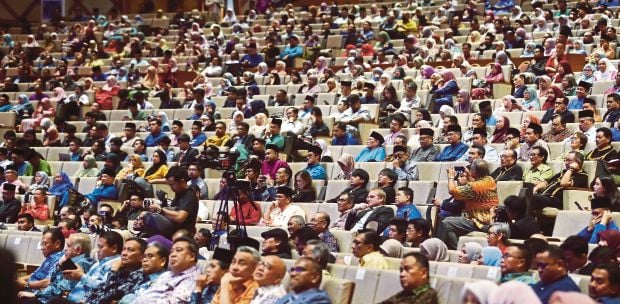On September 1, 2023, Malaysia's fourth Industrial Master Plan, known as the New Industrial Master Plan 2030 (NIMP 2030) was launched.
The NIMP 2030 is one of the key economic documents which formed the basis of an economic vision of the unity government under the Madani economic framework.
Malaysia has its first Industrial Master Plan (IMP1) in 1986. It is a 10 year time frame which at that time was crucial to map out the agenda of heavy industrial policy, automotive sector's growth, and the strive towards attracting Foreign Direct Invesments (FDIs), of which the overarching focus still tailored towards the objectives set forth in the New Economic Policy (NEP).
The IMP1, which was ended in 1995, also crucial to revive the economy from its first experience of an economic crisis in 1985. It was superseded by the Second Industrial Master Plan (IMP2), starting in 1996 until 2005.
While generally the IMP2 appears to be a continuation of the IMP1, it is perhaps a relatively refreshing one as it is meant to kick start the Vision 2020 aspirations. This 10 year period under the IMP2 saw Malaysia's economic growth at its peak. The growth of the economy under the IMP2 seemed unstoppable.
But it was not until the Malaysian economy crashed in the 1997/98 Asian Financial Crisis that it faced a new reality of its growth cycle, when the economy shrunk to its lowest level in history at -7.4 per cent. The pace of IMP2 slowed down ever since but rejuvenated somewhat through the Third Industrial Master Plan (IMP3).
The IMP3 period is the longest, a 15-year period which began in 2006. It is the last mile to reach the destination of a high-income developed nation status for Malaysia by the year 2020.
But, the Malaysian economy experienced yet another economic crisis in 2020 mainly due to the unprecedented event of the pandemic Covid-19, which crippled the global economy.
And towards a recovery process of post-pandemic economy, the NIMP 2030 was launched, for a relatively shorter seven-year period beginning 2023 until 2030. The real question now is: What does it take to make the NIMP 2030 a real success?
The NIMP 2030 claimed that it is different from the previous industrial masterplans in that it is based on missions rather than on sectors. It has, among other things, set 4 Missions and 5 Priority Sectors.
Here, we must look to the inventor of a Mission Economic Model, Prof. Dr. Mariana Mazzucato, who is economics professor at University College London (UCL).
She has written a book entitled "Mission Economy: A Moonshot Guide to Changing Capitalism", not just to explain the framework, underlying ideas, and theoretical underpinnings behind the moonshot economic thinking, but also how to apply and implement it effectively.
She highlighted the major problems of the global economic system and how we should address them through a mission-based framework. Reading the NIMP 2030 blueprint, one can appreciate how the application of the mission-oriented approach is put in place.
But, I believe that in making the NIMP 2030 a great success, we should put extra effort in understanding and applying those seven principles for a new political economy which she underlined in the last part and chapter six of the book.
Let me just take one of those seven principles to illuminate my point – Public finance. Any endeavour worthy of missions are certainly costly and public finance must be seen from a different lens than usual.
In the book, she made her point clear about the myth of a public debt, and why we should not think a public debt like a household debt. This is extremely crucial to realise those missions stipulated in the NIMP 2030.
In other words, the real limit of fiscal deficit and public debt are not any magic figures which we self-imposed, like a 3 per cent deficit or 65 per cent of debt to gross domestic product ratio, but the level of inflation and how productive the spending is to the economy at large.
Certainly, spending on improving the complexity of the economy, refining the social protection system, expanding social security, investing on food security, investing on energy transition, providing universal basic services for all, are examples of spending which can expand the economic pie further rather than to increase the money supply in an existing economic pie.
Finally, perhaps we should invite her to give a special lectures, seminars, or hands-on workshops to our civil servants, like how she has done in the European countries, the UK, Brazil, and many other nations worldwide which have applied a mission-oriented approach in their respective specified socio-economic policies.
We might also established a special Commission towards this end where she can be part of the committee not just in making sure the successful implementation of a mission-oriented approach for NIMP 2030, but also the Madani economic vision as a whole.
*The writer is Associate Professor at the School of Economics, Finance and Banking, Universiti Utara Malaysia






